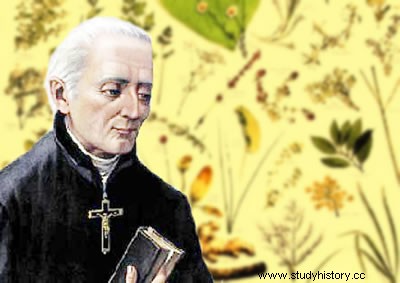
By Rainer Sousa
In 1553, Father José de Anchieta arrived in the Brazilian colonial space with the task of strengthening ties between the Church and the natives. In the 16th century, the so-called Order of Jesus took on the adventurous task of settling in American lands and Christianizing the Indians spread across this immense continent. In summary, this group of preachers should respond to the expansion of Protestantism in Europe with a well-organized process of conversion in the Americas.
Committed to this cause, Anchieta spared no effort to bring the two cultures closer together in the most different ways. He developed a grammar in Tupi that facilitated the learning of the language spoken by most Indians on the coast, organized plays in which biblical narratives were staged and combined religious poems with indigenous musical traditions. In doing so, the priest assumed a pioneering stance towards the indigenous people.
It is worth mentioning that such contact ended up not being restricted to the simple interest of the religious conversion of the natives. The Indians would also pass on knowledge that would greatly help the Europeans to withstand the hostilities of the environment. In this process, we highlight how the pharmacopoeia and the indigenous natural healing methods were gradually being absorbed by the population. Before that, any medication needed had to cross Atlantic waters to get here.
Among other things, Anchieta and his colleagues in the order learned the power of guarana for the treatment of dysentery and other intestinal ailments. For wounds, the application of andiroba helped in asepsis and healing. The various fevers that affected the population were mitigated with jurubeba and passion fruit. When something made breathing difficult, the smoke was strong enough to clear the patient's airways.
Seeing so many advantages and discoveries, no one imagined the cultural differences that were accentuated by the world of healing and disease. In the view of the Indians, most physical ailments were due to the action of evil spirits. For this reason, the use of plants was routinely accompanied by the prayers and rituals of a shaman. Often, by exercising such powers among plants and spirits, the shamans were the most important religious leaders of a tribe.
To counter the religious influence of the shamans, many Jesuits used medical knowledge brought from the Old World. Every time they managed to cure an indigenous person who had been given up, the priests associated the cure achieved with the blessings coming from Christian saints and divinities. In this way, medicine and healing were used as useful instruments of conversion and weakening of the leadership of the wise shamans.
